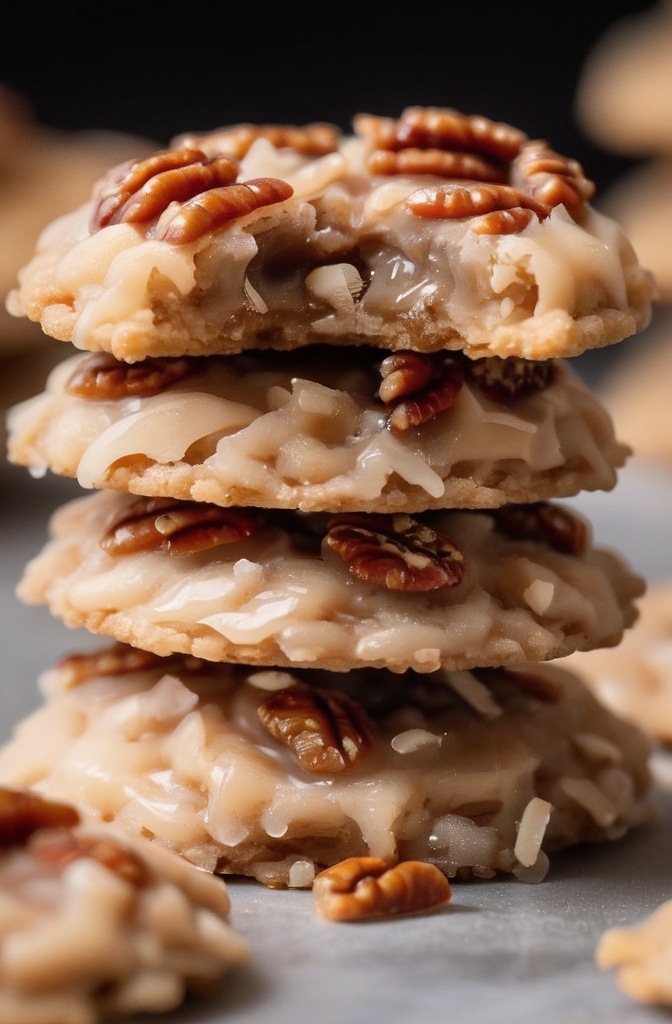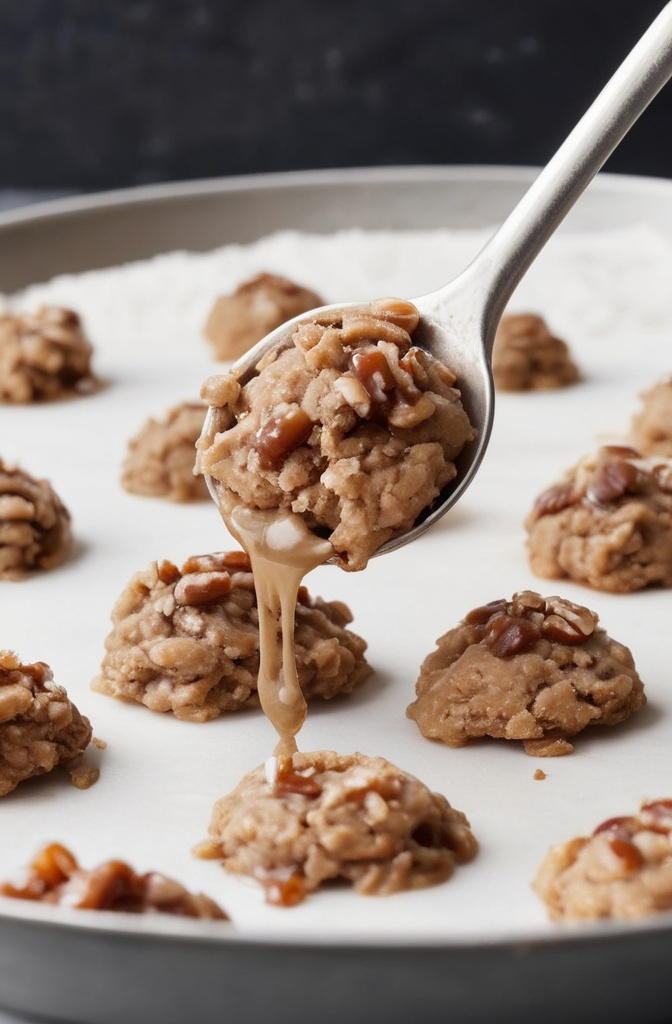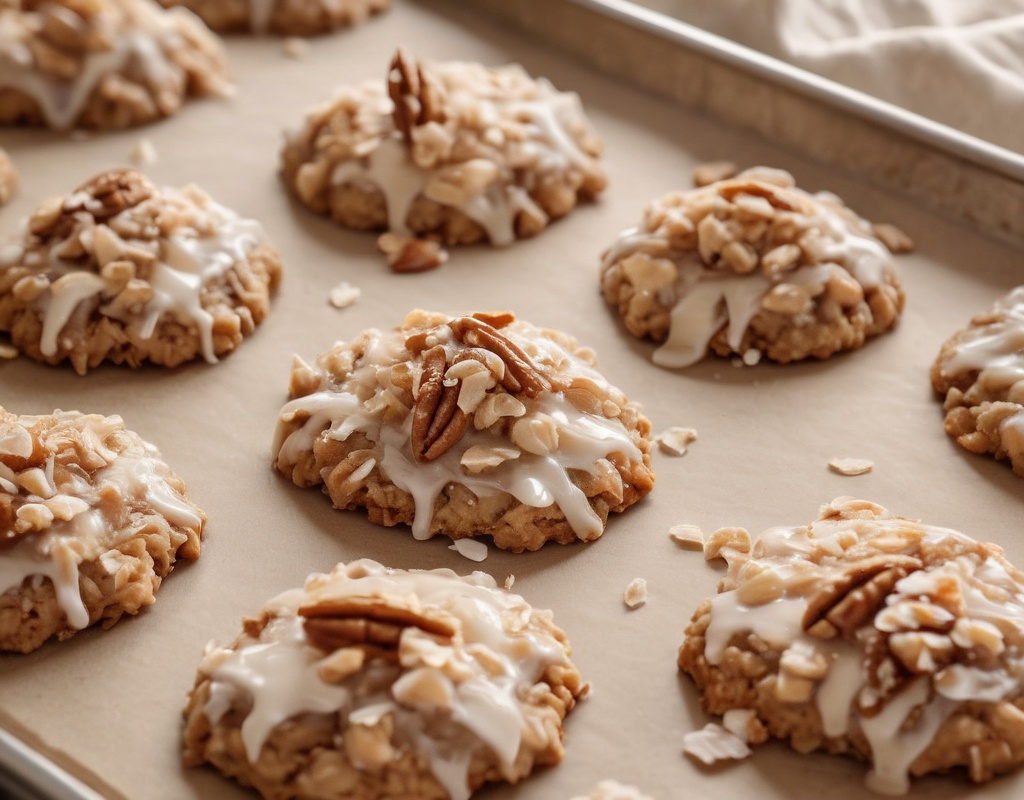Cookies that don’t go in the oven? It’s not magic, it’s chemistry. And when you mix Southern soul with smart technique, what you get is something that tastes like a little piece of caramelized heaven. The no-bake coconut pecan praline cookie is a testament to what you can do with just a few ingredients and a little bit of heat. You don’t need a pastry degree or a convection oven the size of a walk-in closet—just some know-how and the right ratios.
This article is for culinary professionals, bakers, recipe developers, and even food technologists who want to get beyond Pinterest-level recipes and into the why, how, and what happens if I tweak this? side of no-bake cookies. We’re diving deep into the science, the Southern roots, the textures, the flavors, and the nuances that make or break this deceptively simple dessert.
Let’s take this sticky, crunchy, chewy masterpiece apart and build it back up into something that’s not just good—it’s unforgettable.
The Cultural Backbone: Why Pralines Matter
Pralines are more than just sugar bombs. They’re a slice of American culinary history, especially in the South—think New Orleans, where candy shops have been serving pecan pralines since the 1800s. These weren’t the sleek, shiny European-style nut candies; Southern pralines were rustic, creamy, and often set into shapes that looked accidental. That’s part of the charm.
So, the no-bake cookie version? It’s a modern twist on this old-school classic. Still sweet, still nutty, still rich. But this time it doesn’t require a candy thermometer if you know what you’re doing. That makes it more accessible for busy pastry kitchens or high-volume bakeries needing something fast, shelf-stable, and wildly addictive.
Ingredient Breakdown: Simplicity with Purpose
Don’t let the short ingredient list fool you. This cookie is a study in contrasts and balance.
Pecans: Not optional. Not substitutable if you want to keep it legit. Toasted, chopped pecans are the backbone of the texture here. Raw pecans? Nah—they lack the depth you get from the Maillard reaction in toasted nuts. Toast ‘em until they smell like a pecan pie that wants to fight you.
Coconut: Use sweetened shredded coconut for the right chew and binding power. Unsweetened flaked coconut may make you feel virtuous but will throw off your sugar ratio and kill your mouthfeel. You’re not making granola.
Butter: Salted or unsalted? Depends. Salted butter adds depth and enhances the pecan flavor. Unsalted gives you control. But if you forget to add a pinch of salt? Your cookies will taste flat. They need it. Don’t skip it.
Sugar & Brown Sugar: You need a mix. Brown sugar for moisture and depth (hello, molasses), white sugar for structure and proper crystallization. Too much brown sugar and your cookies will be soft and sticky. Too much white and they’ll crunch when they shouldn’t.
Evaporated Milk or Cream: This is where you control the fudgy vs chewy ratio. Evaporated milk gives you that caramelized vibe without being heavy. Heavy cream gives richness but reduces shelf life. Know your product needs.
Vanilla Extract: Add it after cooking, not during. Otherwise, you’ll blow off the aromatics with heat and end up with just-sweet cookies.

The Science of Setting: Why It’s All About the Boil
Here’s the kicker—your cookies live or die by the boil. You’ve got to hit the soft-ball stage, around 235°F to 240°F. Go too low? Your cookies will stay gooey and never set. Go too high? They’ll dry out and crumble like sad praline dust.
You can eyeball it if you’ve made a thousand of these, but if not, use a thermometer. Look for the bubbles to slow down, thicken, and turn a deep golden color. That’s when you stir in the nuts, coconut, and vanilla—and move fast.
Time is not your friend after this point. The mixture starts setting almost instantly. Drop the cookies by the spoonful onto wax paper or silicone mats and do not touch. Don’t be tempted to “fix” the shape. You’ll ruin the texture.
Texture Control: Crunch vs Chew vs Creamy
Professional kitchens need consistent product, and consistency comes from understanding what controls texture.
- For a softer chew: Use more brown sugar and slightly less boil time.
- For a firmer crunch: Slightly increase the white sugar ratio and boil a few seconds longer.
- For creamier centers: Add a tablespoon of peanut butter. Yeah, not traditional—but in small-batch artisan cookies, this adds body and flavor.
Play with ratios in small test batches. Your bakery’s humidity, ingredient brands, and even altitude will affect the final set. You don’t want to find that out on a 300-cookie order day.
Shelf Life and Storage: Not Just an Afterthought
These cookies are shelf-stable for up to 7 days in an airtight container. That makes them a rockstar for markets, pop-ups, and grab-n-go packaging.
But here’s a twist—add a silica gel packet to the packaging (outside the food contact zone, obviously) if you’re selling in humid climates. Keeps the set texture perfect, especially if coconut starts to leach moisture.
Freezer-friendly? Yes. But texture may shift slightly, so if you’re freezing, flash-freeze first then store in layers with wax paper. Defrost at room temp only.
Recipe Scaling in Pro Kitchens
Scaling from a 12-cookie home recipe to a 600-cookie commercial batch isn’t just about multiplying numbers. Sugar behaves differently in bulk. Heat disperses slower. Cooling time increases, which can affect set and texture.
Pro tip: Split large batches into smaller pots during boil. Cook in stages. This way you avoid burning and reduce waste. Use sheet pans lined with Silpats for shaping instead of individual drops—quicker, cleaner, more uniform.
And invest in a proper candy thermometer that clips to the pot. You’re not in a dorm room anymore.

Innovations and Modern Twists
Pastry chefs are getting playful. Think dark chocolate drizzle. Crushed pretzels folded into the mix for salt and crunch. Or even a bourbon glaze finish for a grown-up edge.
You can also press the warm mixture into molds—mini bars, hearts, discs. Turns your humble cookie into a premium product.
Some upscale bakeries even roll the edges in toasted coconut or crushed praline for extra texture. It’s not traditional, but it’s 2025—fusion isn’t a trend anymore, it’s a standard.
Troubleshooting: What Went Wrong?
- Cookies didn’t set: Boil was too short. Add 10–15 seconds next time.
- Too dry and crumbly: You overshot the boil. Use a thermometer.
- Grainy texture: Sugar wasn’t fully dissolved before boiling. Stir longer in the beginning.
- Sticky even after 2 hours: Humidity, or undercooked. Use a fan or chill for a faster set.
- They look weird: Probably stirred too long after boiling. That starts early crystal formation, giving a dull finish.
Even pros mess up a batch now and then. Keep notes. Always test one batch before scaling.
Data Speaks: Consumer Trends on No-Bake Sweets
According to a 2024 Mintel report, no-bake desserts have jumped 37% in popularity in boutique bakeries and online food sales since 2020. Consumers associate “no-bake” with fresher, less processed treats. Smart marketing turns this into a value prop.
Also, coconut-based confections are trending upward, especially in gluten-free and dairy-light markets. These cookies hit both if you sub in plant butter or coconut cream.
Food influencers on TikTok and Instagram Reels have driven sales for nostalgic throwback desserts like pralines. Positioning your cookies as a “heritage Southern sweet” makes them appealing to both Gen Z and Boomers. Weird, right? But it works.
Final Thoughts: Making Something People Remember
The no-bake coconut pecan praline cookie isn’t just a quick treat. It’s a blank canvas with a rich past. A Southern staple turned modern marvel.
For professionals, it offers a high-margin, low-labor product that punches way above its weight in flavor and nostalgia. With the right technique, ingredients, and a little flair, it becomes more than just a cookie—it becomes a signature.
So next time someone calls it “just a no-bake,” you’ll know better. Because if you’ve ever watched a customer close their eyes after that first bite, you know—it’s not about the oven. It’s about the moment.
FAQs
What makes no-bake coconut pecan praline cookies different from traditional baked cookies?
These cookies don’t need an oven. Instead, they rely on stovetop sugar caramelization for a chewy, fudgy texture with Southern praline flavor.
Why do I need to boil the sugar mixture to a specific temperature?
The soft-ball stage (235°F–240°F) ensures proper setting. Too low, and they stay gooey; too high, and they’re dry and brittle.
Can I use other nuts instead of pecans?
You can, but pecans are essential for the Southern praline taste. Other nuts will change the flavor and texture.
What kind of coconut should I use?
Use sweetened shredded coconut for the right moisture and texture. Unsweetened coconut will make the cookies dry.
How do I make sure my cookies set properly?
Boil the sugar mixture to the soft-ball stage, stir in ingredients quickly, and spoon out fast. Avoid over-stirring to prevent graininess.
Can these cookies be made vegan or dairy-free?
Yes, swap plant-based butter and coconut milk or oat cream for the dairy ingredients.
What’s the shelf life of these cookies?
They last up to 7 days in an airtight container. Freezing works too, though texture may change slightly.
Can these cookies be scaled up for commercial baking?
Yes, but cook in smaller batches for better control over heat. Use sheet pans for efficiency.
What are common mistakes to avoid?
Avoid undercooking or overcooking the sugar, stirring too long, or forgetting salt.
Are there creative variations that still work?
Yes, try adding crushed pretzels, dark chocolate drizzle, or a splash of bourbon. Peanut butter can add creaminess.
Why are no-bake sweets trending now?
No-bake treats are fresh, quick, and align with current gluten-free and low-energy trends, making them popular for small businesses.

Mariana is a passionate home cook who creates delicious, easy-to-follow recipes for busy people. From energizing breakfasts to satisfying dinners and indulgent desserts, her dishes are designed to fuel both your body and hustle.
When she’s not in the kitchen, she’s exploring new flavors and dreaming up her next recipe to share with the Foodie Hustle community.

